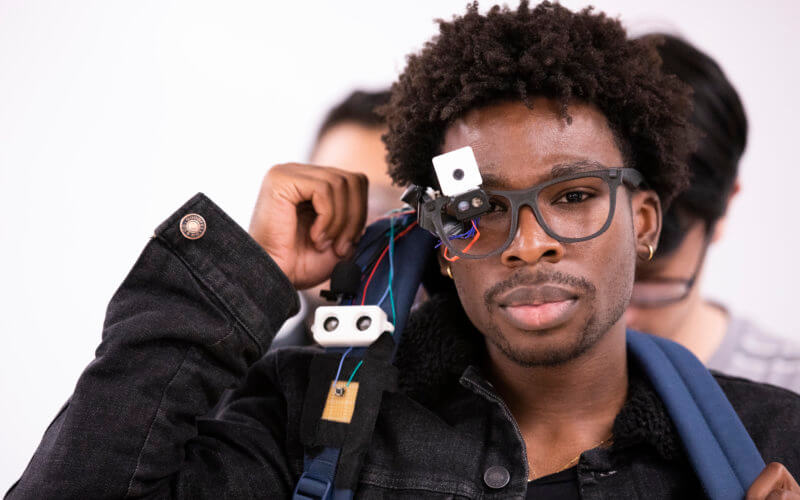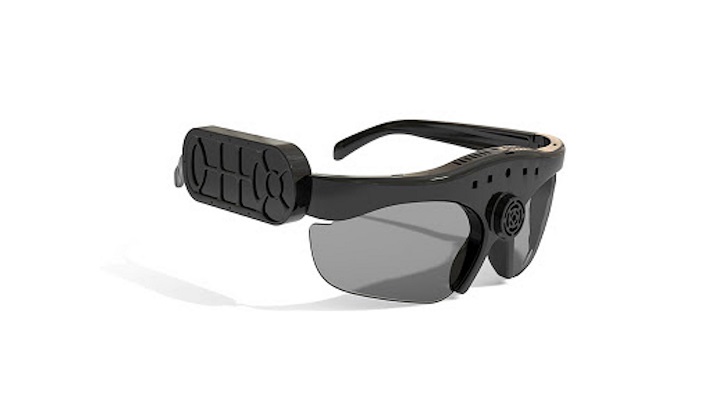Enhancing Accessibility Through Assistive Innovation for the Blind
The assimilation of assistive innovation for the blind represents a critical advancement in availability, basically modifying just how individuals navigate their settings and involve with society. As we discover the varied kinds of assistive devices and their tangible effects on daily living, it becomes crucial to examine just how ongoing technological improvements are improving the landscape of assistance for the blind community.
Introduction of Assistive Innovation
Assistive innovation refers to a variety of gadgets and software program made to improve the capacities of people with specials needs, consisting of those that are blind or aesthetically impaired. This innovation plays an essential duty in advertising independence and enhancing the lifestyle for users. By offering alternate methods for accessing details and performing daily jobs, assistive technology empowers individuals to navigate their settings better.
The development and execution of assistive technology welcome a selection of principles focused on promoting ease of access. These principles consist of user-centered layout, which focuses on the requirements and choices of the individual, and the combination of technology right into daily tasks. Such developments ensure that assistive tools are not only practical but very easy and additionally user-friendly to utilize.
In addition, assistive technology incorporates a diverse spectrum of remedies, from low-tech choices like magnifiers to sophisticated technologies such as screen viewers and Braille display screens. The recurring development of this area is driven by the need to address the one-of-a-kind challenges dealt with by individuals with visual disabilities (Wearable technology for low vision). As modern technology remains to development, the possibility for enhancing access and promoting inclusivity stays appealing, eventually adding to a more fair society

Kinds Of Assistive Gadgets
Many sorts of assistive devices are offered to sustain people who are blind or visually damaged, each created to attend to particular demands and challenges. These gadgets can be broadly categorized into 3 major kinds: low-tech, mid-tech, and sophisticated solutions.
Low-tech devices include items such as magnifiers, Braille labels, and tactile maps. These are fairly basic devices that improve the customer's capability to communicate with their environment without calling for complex technology.
Mid-tech gadgets often entail advanced functions, such as electronic magnifiers and mobile Braille note-takers. These tools can supply performances like speech outcome, permitting users to accessibility info extra effectively.

Influence On Daily Living
The availability of various assistive gadgets significantly boosts the lifestyle for individuals that are visually damaged or blind, influencing their daily living in extensive means. By incorporating innovations such as screen viewers, Braille shows, and audio summary solutions into their regimens, customers get better autonomy and freedom. These devices facilitate access to info, making it possible for individuals to execute day-to-day jobs, such as reading emails, browsing public rooms, and enjoying media web content.
Moreover, assistive devices encourage people to involve even more fully in social interactions and community tasks. The capability to utilize mobile phones equipped with availability functions permits for smooth interaction and link with others. This connection promotes a feeling of belonging and decreases sensations of isolation.
In professional setups, assistive innovation supports efficiency by allowing people to total job tasks successfully. Tools like voice recognition software and specialized magnifying devices enable customers to get involved in the workforce on equivalent ground with their sighted peers.

Improvements in Technology
Current technological improvements have dramatically changed the landscape of tools readily available for people that are blind or aesthetically impaired. The assimilation of fabricated intelligence (AI) and device learning has actually generated applications that boost navigation and item recognition. As an example, smartphone apps can now make use of AI to identify and explain surroundings in official statement real-time, giving customers with important contextual information.
Furthermore, improvements in haptic technology have brought about the development of wise walking canes outfitted with sensing units that detect barriers and provide responsive responses. This equips customers to navigate their environment with raised confidence and self-reliance. Additionally, innovations in text-to-speech software application and braille screens have boosted the availability of electronic web content, enabling for seamless interaction with different media.
Wearable modern technologies, such as wise glasses, are also making strides in assisting visual impairment. As modern technology proceeds to evolve, the possibility for even more transformative tools stays on the horizon.
Future Trends and Innovations
As innovation quickly proceeds, the future of assistive devices for individuals who are blind holds tremendous promise. Technologies in fabricated knowledge (AI) and artificial intelligence are poised to reinvent the way blind customers communicate with their settings. For example, AI-driven applications are being developed to boost item acknowledgment, allowing individuals to recognize and browse their surroundings with better convenience and precision.
Moreover, advancements in haptic responses technology are allowing the production of responsive maps and navigation help that supply real-time details via touch. These technologies not just boost wheelchair yet also foster self-reliance. In addition, wearable devices outfitted with augmented fact (AR) features are arising, supplying users aesthetic info via sound summaries, thereby linking the gap between the physical and digital worlds.
In addition, the integration of wise home technology presents new opportunities for availability, allowing people to control their living environments through voice commands or mobile phone applications. As collaboration in between technology what is a vision doctor called developers and the blind community continues, the concentrate on user-centered design will certainly ensure that future innovations are customized to fulfill the unique demands of this populace (Wearable technology for low vision). The trajectory of assistive technology assures a more comprehensive and empowering future for people that are blind
Final Thought
Finally, assistive technology plays a crucial duty in improving accessibility for people with visual disabilities. The diverse array of devices, including screen visitors and clever canes, considerably boosts daily living and fosters independence. Constant improvements in modern technology and user-centered layout guarantee that these tools cater efficiently to the one-of-a-kind demands of the blind community. As technologies progression, enhanced inclusivity and empowerment can be expected, ultimately enriching the high quality of life for those affected by visual impairments.
The assimilation of assistive innovation for the blind represents a pivotal advancement in access, eye doctor is basically changing how individuals navigate their environments and involve with society.Assistive technology refers to a range of gadgets and software created to enhance the capabilities of individuals with disabilities, including those who are blind or aesthetically impaired. Wearable technology for low vision.As modern technology swiftly advances, the future of assistive devices for individuals that are blind holds enormous assurance. The trajectory of assistive modern technology assures an extra empowering and comprehensive future for people who are blind
In conclusion, assistive technology plays an important function in improving ease of access for individuals with visual impairments.